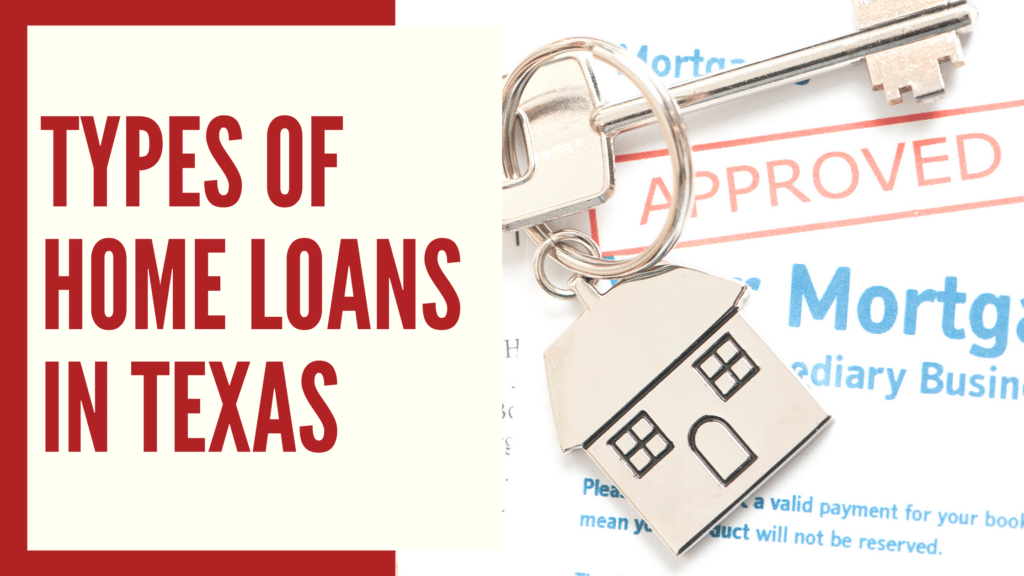
When it comes to purchasing a home in the Lone Star State, navigating the world of home loans can be quite overwhelming. With various options available, understanding the types of home loans in Texas is essential for making an informed decision that aligns with your financial goals.
Texas offers a range of loan types with different advantages and features, making it a veritable treasure trove for homeownership dreams. It’s like stepping into a candy store where every sweet treat caters to different homeownership dreams.
In this comprehensive guide, we’ll explore the diverse range of home loan options, each tailored to different circumstances, needs, and preferences.
Types of Home Loans in Texas
Diving into these types of home loans in Texas, you’ll find conventional loans, FHA loans, VA Loans… even USDA and jumbo loans are on the menu!
Conventional Loans
Conventional loans stand as the cornerstone of home financing. Backed by private lenders rather than government entities, these loans typically require a down payment of around 3% to 20% of the home’s purchase price. They offer flexible terms, and competitive interest rates, and are suitable for those with a strong credit history.
This loan type provides flexibility with terms offering fixed-rate or adjustable-rate mortgages. With fixed-rate mortgages, enjoy peace of mind as interest rates stay consistent over time, whereas adjustable-rate ones may have lower initial rates which could increase broadly later on.
Conventional loans in Texas offer flexibility and competitive interest rates, but they’re not a walk in the park. You’ll need a good credit score, proof of stable income, and the ability to make down payments. So buckle up for this financial rollercoaster ride.
FHA Loans
Federal Housing Administration (FHA) loans are an excellent choice for first-time homebuyers and individuals with lower credit scores. With a down payment requirement as low as 3.5% for those who qualify, these loans are backed by the government, making them more accessible.
While most lenders require 620 or higher for conventional mortgage approval, FHA loans welcome those with scores as low as 500 to 579 if coupled with at least a 10% down payment.
Getting a grip on Texas home loans is key to homeownership success. FHA loans are appealing with low down payments and flexible credit requirements, but beware of mandatory Mortgage Insurance Premiums. It’s crucial to weigh short-term savings against long-term costs.
VA Loans
If you’re a military veteran, active-duty service member, or eligible spouse, VA loans present a remarkable opportunity. These loans, guaranteed by the Department of Veterans Affairs, often require no down payment, making homeownership feasible for those who have served our nation. Competitive interest rates and lenient qualification criteria make VA loans an attractive option.
To qualify for this loan type, you need to meet certain service requirements as outlined on the official VA website. In general terms though, if you’ve served 90 days of active duty, you’re likely eligible.

USDA Loans
For those looking to settle in rural or suburban areas of Texas, USDA loans offer a viable solution. Backed by the United States Department of Agriculture, these loans require no down payment and cater to low-to-moderate-income households. They aim to promote homeownership in eligible rural regions.
USDA loans encompass various programs, including Single-Family Housing Guaranteed Loans and Direct Loans, each with specific criteria and benefits for potential homebuyers.
Jumbo Loans
If you’re eyeing a high-priced luxury home, a jumbo loan might be the answer. These loans exceed the conforming loan limits set by federal agencies and are commonly used by well-qualified buyers seeking expansive properties. While they require substantial down payments and impeccable credit, jumbo loans provide the financing needed for extravagant real estate endeavors.
This type of financing can open doors to upscale real estate options and offer flexibility not found in traditional mortgages. But remember: greater rewards often come with higher risks (for lenders). Hence, these loans carry stricter eligibility requirements.
Eyeing a luxury home in Texas? A jumbo loan could be your key. Designed for high-end properties, these loans offer flexibility but come with stricter eligibility requirements and potentially higher interest rates. So weigh the pros and cons before diving into this large-scale lending route.
Adjustable-Rate Mortgages (ARMs)
While fixed-rate mortgages steal the spotlight, adjustable-rate mortgages (ARMs) have their unique advantages. Initially offering lower interest rates than fixed-rate counterparts, ARMs are subject to rate adjustments after a predetermined period. These loans suit those who plan to sell or refinance before the rate adjustment takes place.
Fixed-Rate Mortgages
A staple in the mortgage landscape, fixed-rate mortgages provide consistency and stability. With interest rates locked in for the loan’s entirety, homeowners can accurately budget their monthly payments. This type of loan is suitable for individuals seeking predictability and planning to stay in their homes long-term.
Reverse Mortgages
For homeowners aged 62 and older, reverse mortgages offer a unique approach. This financial product allows homeowners to convert a portion of their home equity into cash, providing a valuable source of income during retirement.
Keep in mind that interest accrues over time, and the loan is typically repaid when the homeowner sells the home or passes away.
Bridge Loans
When transitioning between homes, bridge loans provide temporary financing. These short-term loans cover the gap between selling a current home and purchasing a new one. While they offer convenience, bridge loans often come with higher interest rates and require a clear repayment strategy.
Energy-Efficient Mortgages
As sustainability gains momentum, energy-efficient mortgages (EEMs) support environmentally conscious homeowners. These loans factor in the cost of energy-efficient upgrades, allowing buyers to invest in greener living spaces. EEMs consider the savings generated by reduced energy consumption when determining loan amounts.
How to Get Pre-Approved for a Home Loan in Austin?
To obtain pre-approval for an Austin home loan, follow these steps:
- Select a lender, either from local banks or local mortgage companies
- Complete a mortgage application disclosing your financials; the lender reviews your application, including credit checks
- Upon verification, you’ll get a pre-approval letter indicating the potential borrowing amount, loan options, and interest rate; this letter is crucial for serious house hunting, reflecting buyer commitment and budget clarity.
Pre-approval entails collecting recent pay stubs and financial documents, streamlining home purchase readiness and enabling confident offers in Austin or elsewhere.
Home Loans in Texas
Navigating the world of home loans in Texas requires a clear understanding of the diverse options available. From conventional loans to specialized choices like VA and USDA loans, each type caters to unique financial situations and homeownership aspirations.
By aligning your needs with the appropriate loan, you can embark on your homeownership journey with confidence and financial security. Remember, choosing the right loan is not only about securing a property but also about shaping your future.
If you’re feeling a bit overwhelmed or unsure which route to take as you make your move to Austin, Texas, remember that our skilled relocation specialists are just a click away. Take the next step in your homebuying journey. Fill out the form below to get started of click here to connect with our experts!





